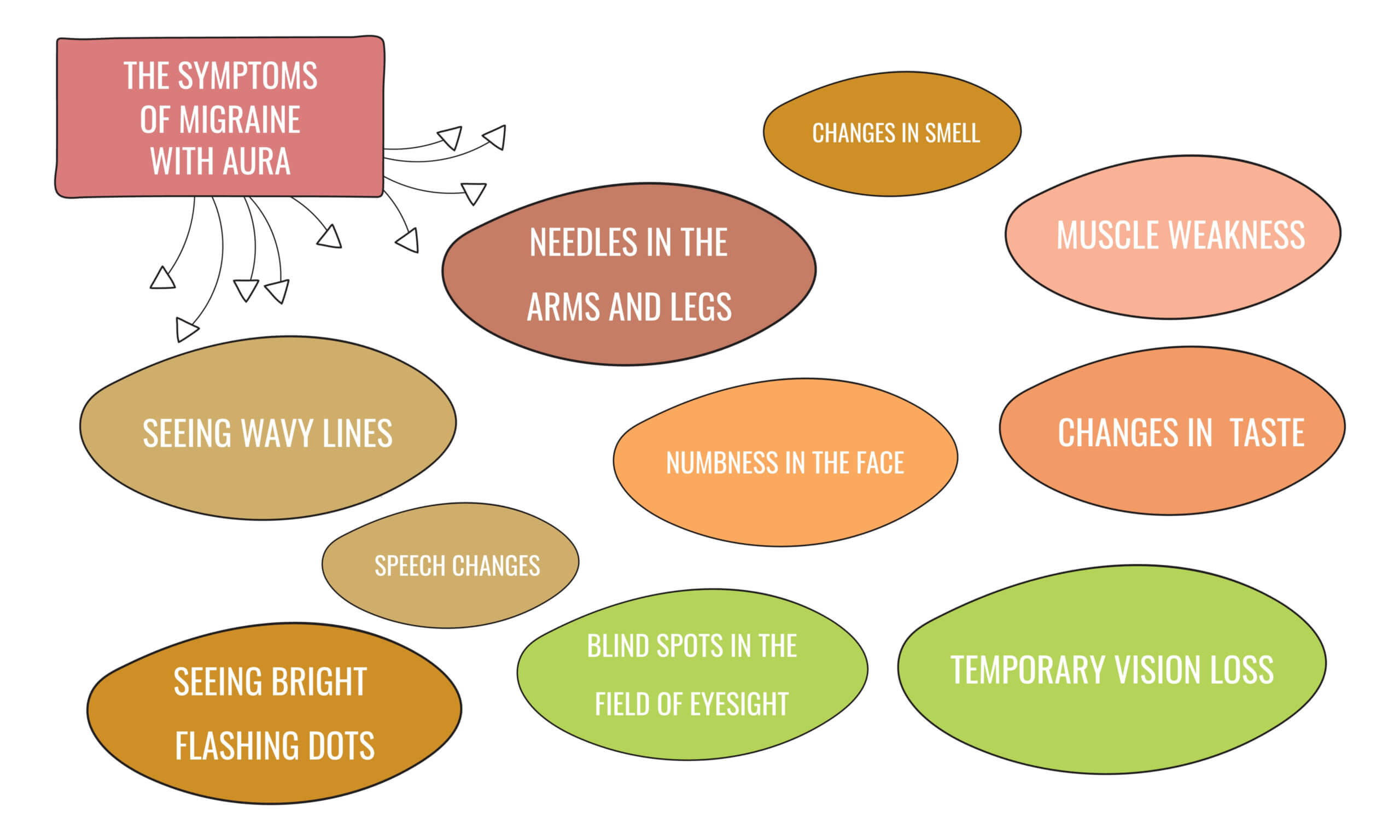
You get a “two fer” today.
03/16/2022
A migraine is NOT just a bad headache. Did you know that there are people in the world that have never had any type of headache? I have met a few. I could not believe that there were people that had never had any type of headache. Well, I had to talk to them and explore further. Sure enough, they had never had any type of headache. One thing that I learned is that it is very difficult to explain a pain that they have never experienced, so that they can understand that pain.
Pain is subjective.. It depends on the type of pain and the person experiencing the pain. Why is it so hard to explain? I think one of the reasons is that we need a base reference. What are the different types of pain you have experienced? Tension headache, broken arm, broken leg, broken toe, kidney stone, childbirth, arthroscopic surgery, major surgery, heart attack, arthritis flare-up, etc.
Even if someone has the same kind of injury, the pain may still be different than yours. I know. It is crazy, isn’t it? What if we learn how to better state the pain we are experiencing and how to help others understand what a migraine is? They may never understand the pain you experience, but let’s try to help them understand what a migraine is and what a migraine is not.
Here is the definition of a migraine by the National Institute of Neurological Disorders and Stroke. “The pain of a migraine headache is often described as an intense pulsing or throbbing pain in one area of the head. However, it is much more; the International Headache Society diagnoses a migraine by its pain and number of attacks (at least 5, lasting 4-72 hours if untreated), and additional symptoms including nausea and/or vomiting, or sensitivity to both light and sound. Migraine is three times more common in women than in men and affects more than 10 percent of people worldwide. Roughly one-third of affected individuals can predict the onset of a migraine because it is preceded by an “aura,” visual disturbances that appear as flashing lights, zig-zag lines or a temporary loss of vision. People with migraine tend to have recurring attacks triggered by a number of different factors, including stress, anxiety, hormonal changes, bright or flashing lights, lack of food or sleep, and dietary substances. Migraine in some women may relate to changes in hormones and hormonal levels during their menstrual cycle. For many years, scientists believed that migraines were linked to the dilation and constriction of blood vessels in the head. Investigators now believe that migraine has a genetic cause.”
Look at that. Does that look like just a bad headache? No! It is a brain disorder. It can cause a stroke. It can be debilitating for hours, days and sometimes months.
Look at this information from the Cleveland Clinic. “A migraine is much more than a bad headache. This neurological disease can cause debilitating throbbing pain that can leave you in bed for days! Movement, light, sound and other triggers may cause symptoms like pain, tiredness, nausea, visual disturbances, numbness and tingling, irritability, difficulty speaking, temporary loss of vision and many more.
What’s a migraine? What does a migraine feel like?
A migraine is a common neurological disease that causes a variety of symptoms, most notably a throbbing, pulsing headache on one side of your head. Your migraine will likely get worse with physical activity, lights, sounds or smells. It may last at least four hours or even days. About 12% of Americans have this genetic disorder. Research shows that it’s the sixth most disabling disease in the world.
What are the types of headaches? What type of headache is a migraine?
There are over 150 types of headaches, divided into two categories: primary headaches and secondary headaches. A migraine is a primary headache, meaning that it isn’t caused by a different medical condition. Primary headache disorders are clinical diagnoses, meaning there’s no blood test or imaging study to diagnose it. A secondary headache is a symptom of another health issue.”
https://my.clevelandclinic.org/health/diseases/5005-migraine-headaches
Learning to describe your pain more effectively.
THE FOUR MAJOR TYPES OF PAIN:
-
- Nociceptive Pain: Typically, the result of tissue injury. Common types of nociceptive pain are arthritis pain, mechanical back pain, or post-surgical pain.
-
- Inflammatory Pain: An abnormal inflammation caused by an inappropriate response by the body’s immune system. Conditions in this category include gout and rheumatoid arthritis.
-
- Neuropathic Pain: Pain caused by nerve irritation. This includes conditions such as neuropathy, radicular pain, and trigeminal neuralgia.
-
- Functional Pain: Pain without obvious origin, but can cause pain. Examples of such conditions are fibromyalgia and irritable bowel syndrome.
Words used to describe pain.
-
- pressure
-
- aching
-
- squeezing
-
- cramping
-
- burning
-
- freezing
-
- numbness
-
- tingling
-
- shooting
-
- stabbing
-
- electric shocks (jolts)
-
- burning
-
- sharp
-
- dull
-
- intense
-
- aching
-
- cramping
-
- shooting
-
- stabbing
-
- gnawing
-
- gripping
-
- pressure
-
- heavy
-
- tender
-
- prickly
-
- stinging
-
- pounding
-
- pulsating
-
- throbbing
-
- sick (associated with nausea)
-
- tightness
-
- vise-like
-
- jabbing
-
- lightning bolts
-
- constant
-
- constant with jabs
Record your Migraine
Keep a record. Clues are very valuable.
Date
Time (how long did it last)
Where is the pain located?
Are there triggers? List them.
How quickly does the headache develop? (Suddenly, over time, starts low and increases, etc.) Describe the start. You may have to think back before the pain started, what was going on?
Is there a family history of migraines or headaches?
What do you take? What works? What does not work?
Things that may happen Before a migraine
Can you recognize some of the lesser-known symptoms of a migraine? The things that may happen before the pain begins.
-
- Intense throbbing or dull aching pain on one side of your head or both sides.
-
- Pain that worsens with physical activity.
-
- Nausea or vomiting.
-
- Changes in how you see, including blurred vision or blind spots.
-
- Being bothered by light, noise, or odors.
-
- Feeling tired and/or confused.
-
- Stopped-up nose.
-
- Feeling cold or sweaty.
-
- Stiff or tender neck.
-
- Lightheadedness.
-
- Tender scalp.
We should talk about the different types of migraines and medication overuse headaches next time.
Next is the time change debate.
Time Change Stuff
Everybody has an opinion. Especially the two weekends a year we change our clocks. Most of us are out of sorts for a week or two. The “reasons” that are used to change the time twice a year are plentiful and are usually exaggerated or down right wrong.
We aren’t gaining any daylight. The amount of daylight is still the same, our time of day has changed. I am a night owl, but I think that I would prefer the Standard Time to be the one we stay with. Settle down, you can have your say later and I hope that you do. It is much more interesting when we can have a discussion.
When I was younger, I would ask why do we do this? I was told it was to help the farmers and conserve energy. The very next questions was, you guessed it, “how?” So, we would have more time in the evening to do hay. Since most of my family had other jobs during the day and did the farming chores after work and on the weekends, that made sense to me. As for the energy conserving … well, that did not get a good explanation. We stayed out until dark-thirty so I guess we didn’t have to use as much electricity for air conditioning. I know now that there isn’t a good explanation. We no longer use coal to heat. We have much better light bulbs now. It is much better to set the thermostat and leave it alone.
Our body’s circadian rhythm is closer to Standard Time
What happens if the change to Daylight-Saving Time is made permanent? I guess we need to decide if that hour of daylight is better for us to use in the morning or the evening. Our circadian rhythm is closer to Standard Time. It seems as though it is better health wise for us to stay on Standard Time. Kids catching the bus would benefit more from Standard Time. When it is dark out, I don’t want to get up and I know that it is harder to get the kids up. It is hard to get them to bed when it is daylight outside and they have school the next day. Even if you can get them in bed, they don’t go to sleep. They are getting a double whammy. They lose out on sleep time and they are hard to get up in the morning while it is still dark outside.
Maybe the farmers want more light in the mornings. It is really hot outside after two or three.
Now I hear that Congress is getting ready to get in to the time change game. This may be interesting. It looks like our representatives are leaning towards Daylight-Saving Time. If it passes then Hawaii and Arizona will have to change their clocks. Whichever group has the best lobby will probably win.
I do like the idea of never having to change our clocks forward and back. I prefer us to be on Standard Time for health reasons and kids that have to get up early and catch a bus. For the parents that have to get them to bed, it will be easier on you to get them to bed when it is dark outside.
Yes, I do know that Daylight-Saving Time gives us more daylight in the evening to be active or “do stuff.” Is that one hour in the evening worth all the other issues we will have to deal with?
I don’t know 100% which is best, but I am leaning towards Standard Time. If Daylight-Saving Time is picked, then we will make the best of it, do some studies over 10 years and see. Just pick one!
And your thoughts?
Pat


